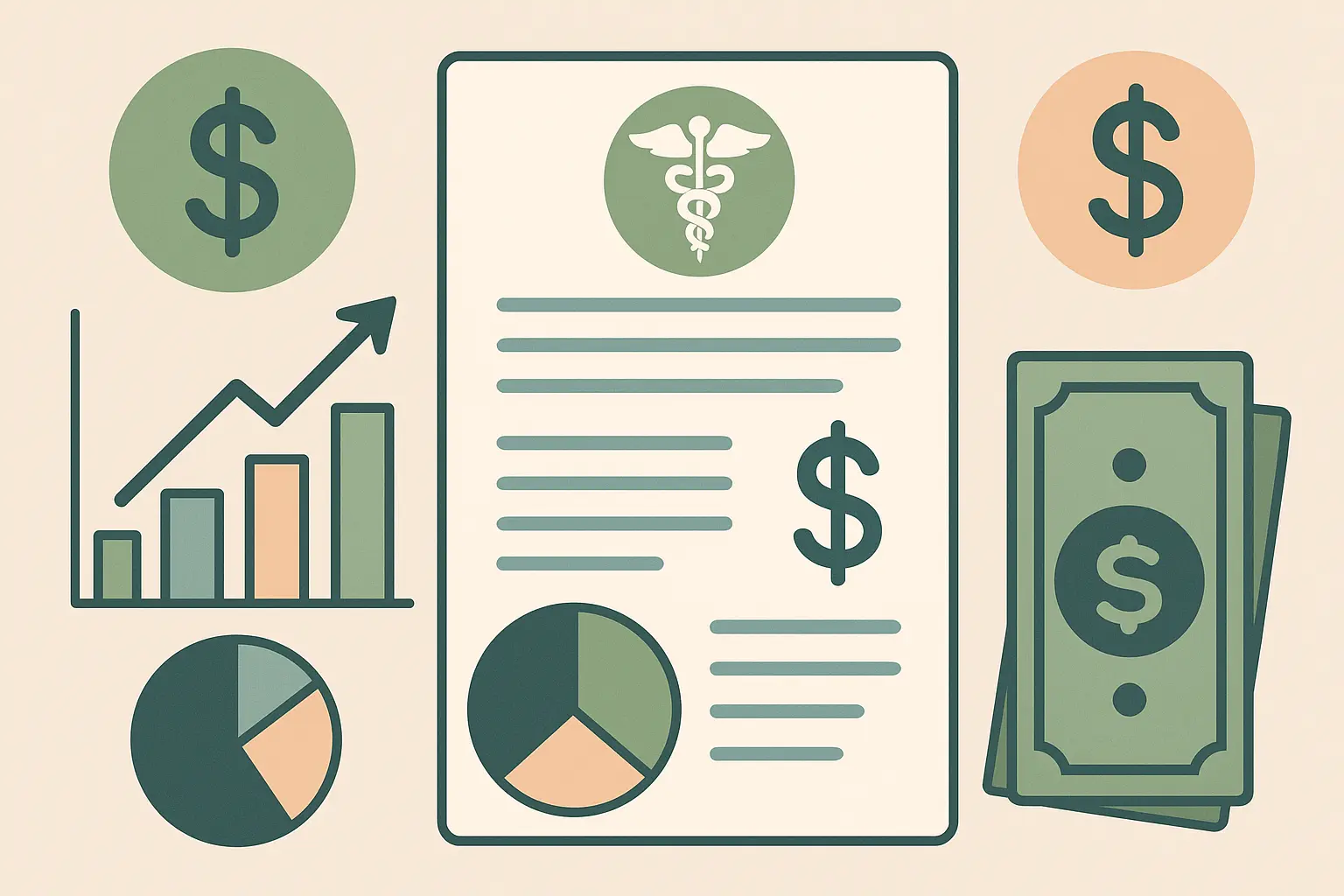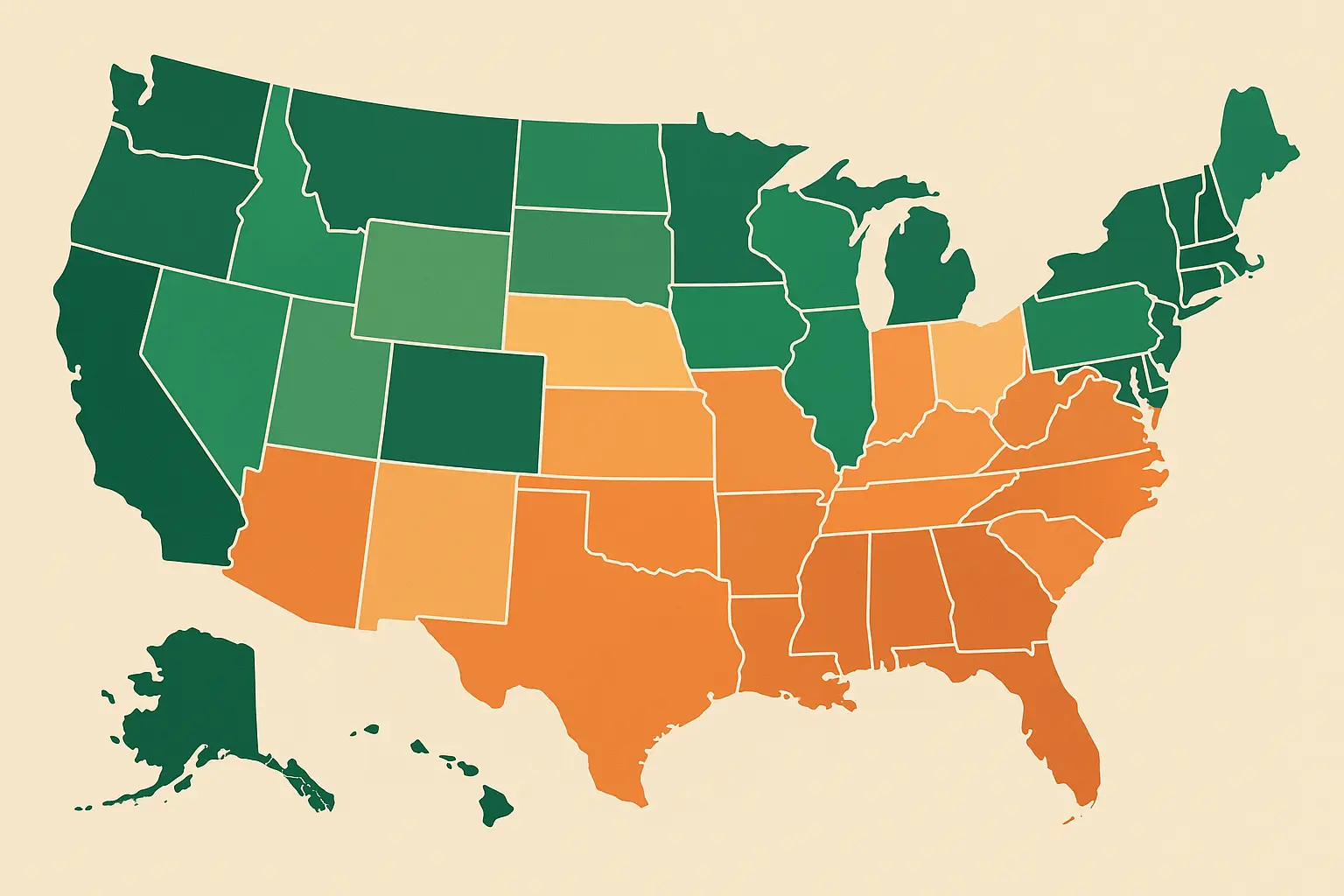The Real Deal on Medical Assistant Pay: What You’ll Actually Earn (And How to Earn More)

Understanding the typical medical assistant salary can help you see where you stand and what’s possible in this career. Let’s cut through the fluff and talk real numbers.
The healthcare field is booming, and medical assistants are right in the thick of it. According to the Bureau of Labor Statistics, employment of medical assistants is projected to grow 12 percent from 2024 to 2034, which is way faster than most other jobs. That’s good news if you want job security and room to grow your paycheck.
Table of Contents
- What You’ll Actually Make Right Now
- Why Some People Earn Way More Than Others
- Smart Moves to Boost Your Pay
- What’s Coming Next for This Field
What You’ll Actually Make Right Now
Let’s start with the numbers everyone wants to know.Medical assistants typically earn between $28,000 and $45,000 per year, which reflects the wide range of medical assistant salary levels across the U.S. That’s a pretty wide range, right? There’s a reason for that – and understanding why some people land on the higher end while others get stuck at the bottom makes all the difference.
According to the Bureau of Labor Statistics, the median annual medical assistant salary in May 2024 was $44,200, or $21.25 per hour. That’s actually up quite a bit from previous years, which tells you the demand is real.
But here’s what those averages don’t tell you: where you fall in that range depends on choices you can actually control. A medical assistant in rural Alabama will make considerably less than one in Seattle, but the cost of living might make that Alabama job more attractive financially.
Starting Out vs. Getting Experienced
Just starting out? Expect somewhere between $25,000 and $32,000 annually. Yeah, that $12-15/hour stings a little. But stick with me here – I’ve watched people double their pay in just a few years by making smart moves.
Medical assistants with five or more years of experience regularly pull in $38,000 to $50,000 or more. That jump from newbie to seasoned pro represents one of the biggest salary bumps you’ll see in this field.
Understanding compensation benchmarks is crucial, and our comprehensive salary increase calculator guide can help you figure out realistic expectations for your next raise based on your experience and local market. The breakdown below highlights how medical assistant salary changes with years of experience
| Experience Level | Hourly Rate | Annual Salary Range |
|---|---|---|
| Less than 1 year | $16.34/hr | $25,000-$32,000 |
| 1-2 years | $17.34/hr | $32,000-$36,000 |
| 3-5 years | $18.83/hr | $36,000-$42,000 |
| 6-9 years | $19.86/hr | $42,000-$48,000 |
| 10+ years | $20.56/hr | $48,000-$55,000+ |
Source: Payscale data via Nurse.org
Take Sarah, for example. She started at a family practice making $28,000. After getting her certification and gaining three years of experience, she moved to a hospital where she now makes $41,500 plus shift pay. That’s a 48% bump through strategic career moves.
The key thing to remember? This progression isn’t automatic. The medical assistants who actively pursue training, certifications, and new responsibilities see their paychecks grow faster than those who just show up and do the minimum.
Hourly vs. Salary: What Works Better?
Most medical assistants work hourly, earning anywhere from $13.50 to $22.00 per hour. Some positions offer annual salaries with benefits packages. Each has its perks.
Hourly gives you flexibility and overtime opportunities. Salaried positions typically come with better benefits and predictable income. Which one works better depends on your situation – if you want steady income and good benefits, salary might appeal to you. If you like picking up extra shifts for more money, hourly could be your thing.
Why Some People Earn Way More Than Others
Here’s the thing – your paycheck isn’t random. There are specific factors that determine whether you’re making $28K or $48K, and most of them are within your control.
Location Makes or Breaks Your Paycheck
Geography isn’t just about where you want to live – it’s one of the biggest factors that affects your medical assistant salary. We’re talking $10,000+ differences between states. But don’t just chase the highest number – $45K in San Francisco won’t stretch as far as $35K in Kansas City.
Alaska, California, Washington, and Massachusetts lead the pack, often paying 20-30% above national averages. Alaska tops the list because of high demand and tough working conditions that limit the workforce. California’s high wages reflect both living costs and the state’s huge healthcare system.
| State | Average Annual Salary | Cost of Living Index | Real Value |
|---|---|---|---|
| Alaska | $52,490 | 127.1 | High Value |
| California | $48,720 | 151.7 | Moderate Value |
| Washington | $47,830 | 118.7 | High Value |
| Massachusetts | $46,680 | 149.7 | Moderate Value |
| Hawaii | $45,210 | 196.3 | Lower Value |
Source: Bureau of Labor Statistics via Nurse.org
Washington and Alaska offer the best combo of good wages and reasonable living costs. Hawaii, despite decent wages, becomes less attractive when you factor in those sky-high living expenses.
Clinical Work Pays More Than Desk Work
Medical assistants who do hands-on patient care – taking vitals, assisting with procedures, handling medical equipment – typically earn more than those doing purely administrative tasks. This pay difference reflects the additional skills and training required, plus the increased responsibility of direct patient care.
Administrative roles handle important stuff like scheduling and insurance verification, but they typically pay $2,000-$5,000 less annually because they don’t require the same level of medical training.
Certification: Your Ticket to Better Pay
Get certified. Seriously. Certification almost always boosts your medical assistant salary, often by $3,000–$5,000 annually, and it pays for itself in about 8 months. Professional certification through organizations like the American Association of Medical Assistants (AAMA) or American Medical Technologists (AMT) shows employers you’re serious about your career.
According to the American Association of Medical Assistants, as of 2021, about 96% of Medical Assistants receive some type of benefits package from their employers, with certified medical assistants typically getting more comprehensive benefits and higher base pay.
Employers prefer certified medical assistants because certification proves competency and commitment. When budget cuts happen, certified medical assistants usually have better job security than their non-certified colleagues.
Getting certified requires completing an accredited program, gaining hands-on experience through internships, and passing a national exam. The process takes 9-24 months depending on whether you choose a certificate program or associate degree, but it opens doors to higher-paying positions.
Once you’ve earned certification, continuing education through workshops and additional certifications can lead to salary increases of $2,000-$5,000 annually. The healthcare field changes constantly, and medical assistants who stay current position themselves for the best opportunities.
Where You Work Matters Big Time
The healthcare setting you choose significantly impacts your paycheck. Hospitals, specialized clinics, urgent care centers, and private practices all offer different pay scales.
Hospital-based medical assistants often earn 15-25% more than those in private practice due to shift differentials and better benefits. According to the Bureau of Labor Statistics, the highest-paying industries for medical assistants include outpatient care centers at $47,560, hospitals at $45,930, and offices of physicians at $43,880.
However, hospital work often means nights, weekends, and holidays. The higher pay reflects both the increased responsibility and the challenging schedule.
Specialized Skills Command Premium Pay
Medical assistants with specialized skills in phlebotomy, EKG administration, medical coding, or lab procedures can command higher wages. These specialized skills make you more valuable and harder to replace.
Adding even one specialized skill can increase your earning potential and make you more competitive for higher-paying positions. Specialty clinics often pay premium wages for medical assistants who can perform specific procedures without additional training.
Maria, a certified medical assistant, completed additional training in phlebotomy and EKG administration. These specialized skills allowed her to move from a general practice earning $35,000 to a cardiology clinic where she now earns $42,000, plus quarterly bonuses.
Smart Moves to Boost Your Pay
Want to make more? Here are your realistic options, ranked by how quickly they can impact your paycheck.
Moving Into Leadership Roles
Experienced medical assistants can advance to supervisory positions or office management roles, often boosting their salaries by $8,000-$15,000 annually. These leadership roles require different skills than direct patient care – you’ll be managing staff, handling scheduling, training new employees, and dealing with administrative responsibilities.
The transition isn’t automatic. You need to demonstrate leadership potential by volunteering for additional responsibilities, mentoring new medical assistants, and showing initiative in problem-solving. Employers promote medical assistants who prove they can handle increased responsibility beyond their basic job duties.
Start by taking on training duties for new hires, handling inventory management, or coordinating with different departments. These experiences build the management skills employers look for when filling supervisory positions.
Using This Job as a Career Springboard
Medical assistant experience provides excellent foundation for advancing to higher-paying healthcare positions. The skills you develop – patient interaction, medical terminology, healthcare procedures, and administrative tasks – transfer well to many other healthcare careers.
James worked as a medical assistant for four years before transitioning into medical coding. His medical assistant background gave him practical understanding of procedures and terminology, helping him quickly master coding concepts. He now earns $48,000 annually as a medical coder, a 35% increase from his previous salary.
For medical assistants looking to transition into specialized roles, understanding salary benchmarks across healthcare positions is valuable. Our analysis of certified pharmacy technician salaries and physician assistant compensation provides insight into related healthcare career paths and their earning potential.
Mastering Salary Negotiations
Many medical assistants leave money on the table because they don’t know how to ask for raises or prepare properly for performance reviews. Successful negotiation requires preparation and understanding your value to the organization.
When pursuing leadership roles, knowing how to ask for a raise effectively becomes crucial for medical assistants transitioning into supervisory positions with increased responsibilities.
Research local market rates, document your achievements and additional responsibilities, and prepare a compelling case based on your contributions to the practice. Focus on the value you bring, not your personal financial needs.
Come prepared with specific examples of how you’ve improved patient satisfaction, increased efficiency, or taken on additional responsibilities. Track your accomplishments throughout the year, not just before review time.
What’s Coming Next for This Field
The medical assistant job market is experiencing unprecedented growth. The Bureau of Labor Statistics projects 18% growth through 2032, which is much faster than average for all occupations. About 112,300 openings for medical assistants are projected each year, on average, over the decade.
This growth is driven by an aging population, expanded healthcare access, and increasingly complex medical care. The question isn’t whether there will be jobs – it’s how you can position yourself to earn at the top of the pay scale.
What’s Driving All This Demand
Healthcare expansion, technological advances, and demographic shifts are creating unprecedented opportunities. The aging baby boomer population requires more medical care, while healthcare reform has expanded access for millions of Americans.
Rural areas particularly struggle to find qualified medical assistants, often offering signing bonuses and higher wages to attract talent. These factors combine to create sustained demand across all healthcare settings.
Technology’s Impact on Your Paycheck
Medical assistants who adapt to new technologies like electronic health records, telemedicine, and digital diagnostic tools often command higher salaries and better job security. Technology isn’t replacing medical assistants – it’s changing what they do and making them more valuable.
Telemedicine has created new roles for medical assistants who can coordinate virtual patient visits and manage remote monitoring equipment. Practices that invest in new technology often pay premium wages for medical assistants who can operate these systems efficiently.
New Opportunities and Specializations
Telemedicine, urgent care centers, specialty clinics, and outpatient surgery centers are creating niche opportunities for medical assistants with specific skills. These emerging areas often pay premium wages because they require additional training and have less competition.
Specialty clinics focusing on dermatology, cardiology, or orthopedics often pay higher wages for medical assistants with relevant experience and training. Getting in early with these new healthcare models often leads to rapid salary growth as these sectors expand.
Bottom Line
Medical assisting can be a solid career if you’re strategic about it. Don’t just show up and hope for raises. Your paycheck depends on choices you can control – getting certified, learning specialized skills, choosing the right work environment, and positioning yourself for advancement.
The 18% job growth projection means you’re in a field with genuine long-term potential. But the medical assistants who earn the highest salaries are those who stay ahead of trends, embrace new technologies, and continuously develop their skills.
Don’t settle for entry-level pay if you’ve been in the field for years. Use these strategies to advocate for yourself and pursue the compensation you deserve. The healthcare industry needs skilled medical assistants, and employers will pay competitive wages for professionals who bring value to their organizations.
Remember that your resume plays a crucial role in accessing higher-paying positions. When you’re ready to pursue better opportunities or negotiate for higher compensation, having a professionally crafted resume that highlights your certifications and achievements can make the difference. Our ATS-friendly resume guide helps ensure your qualifications stand out to healthcare employers looking for skilled professionals worth paying premium wages.
The demand is there – but to maximize your career growth, make sure your medical assistant salary reflects the skills, certifications, and experience you bring.











